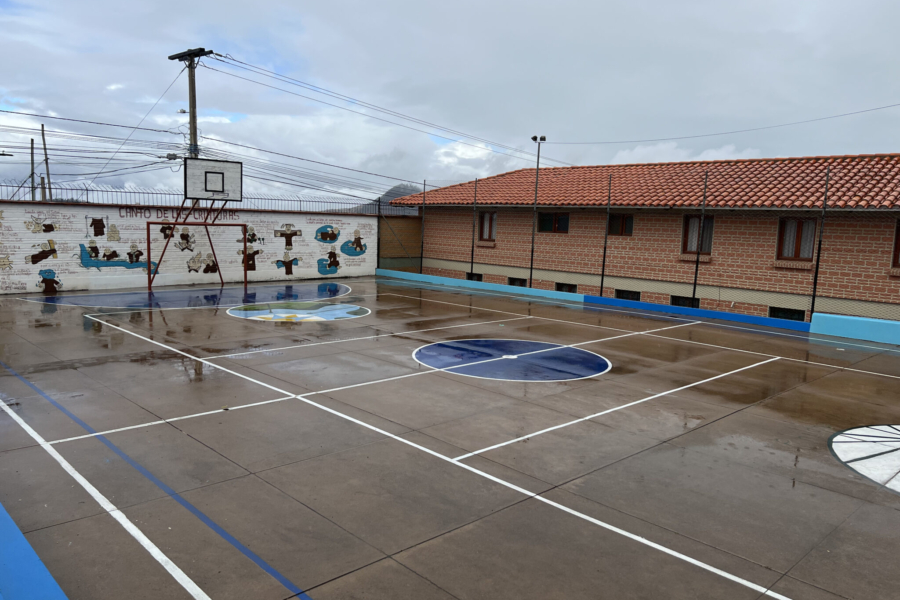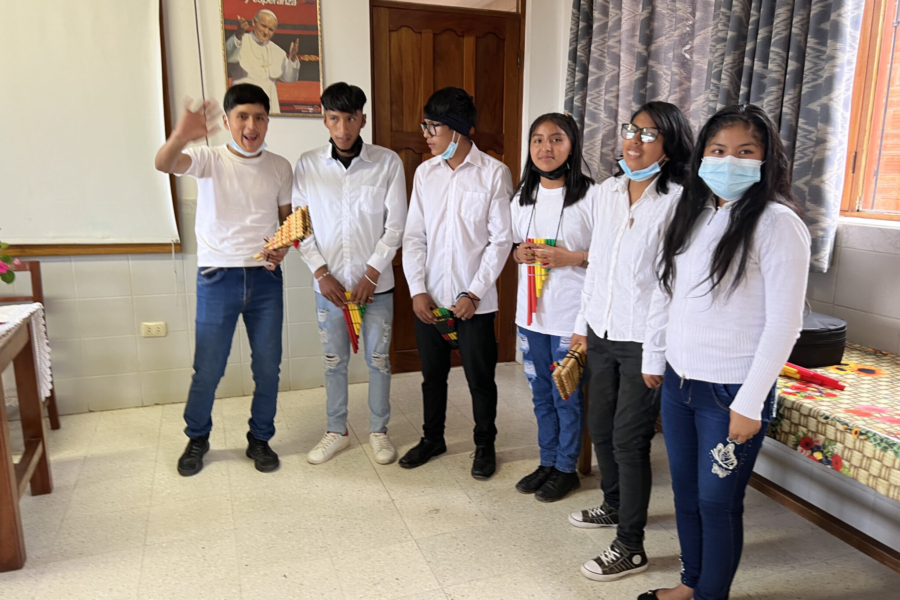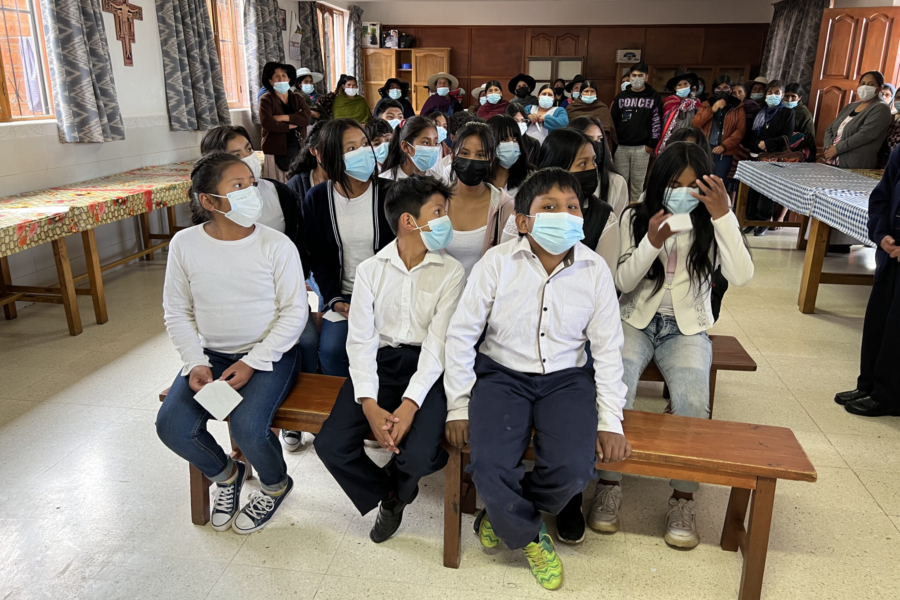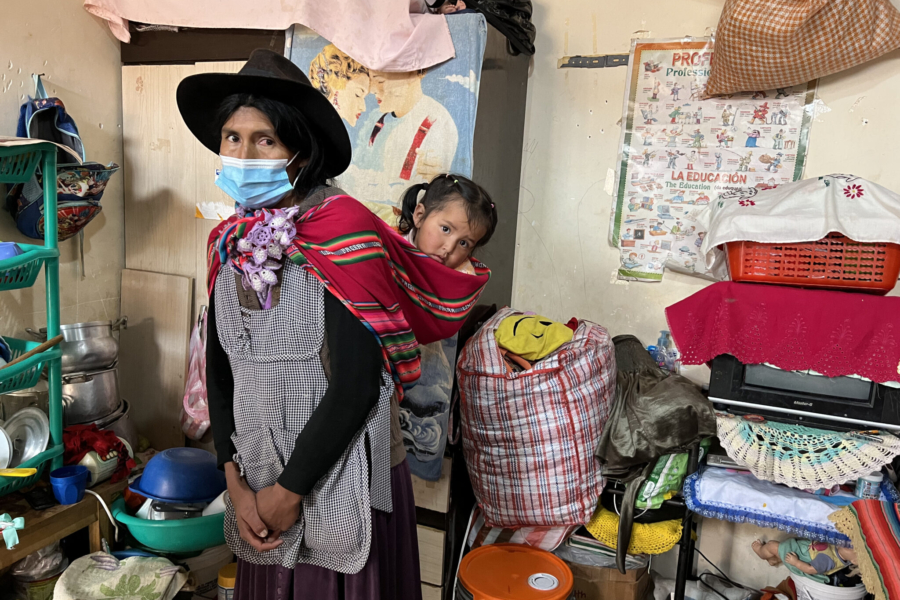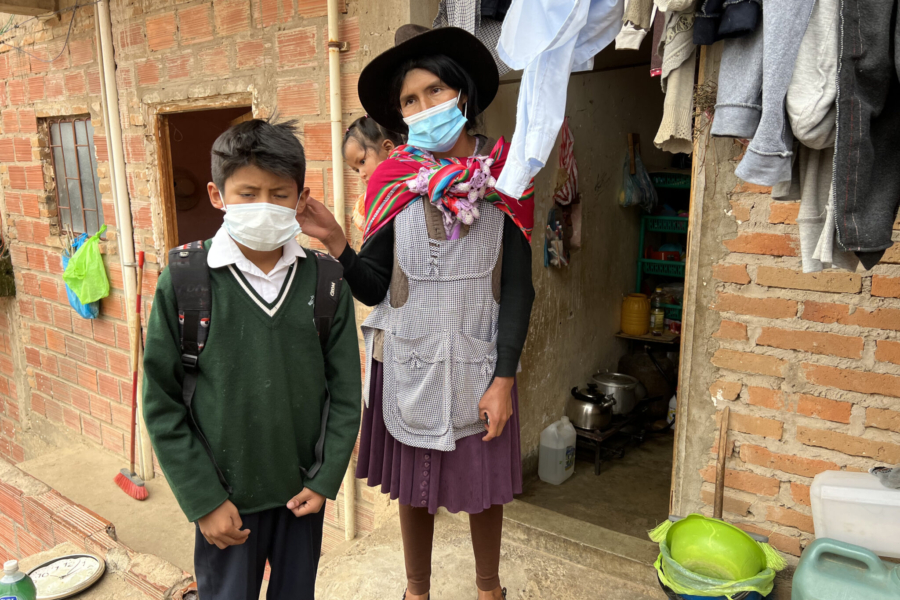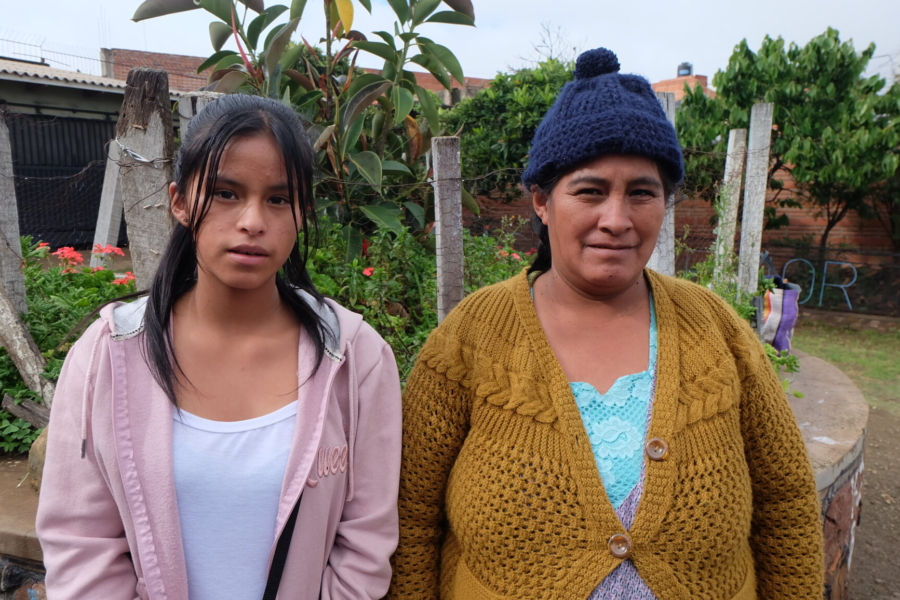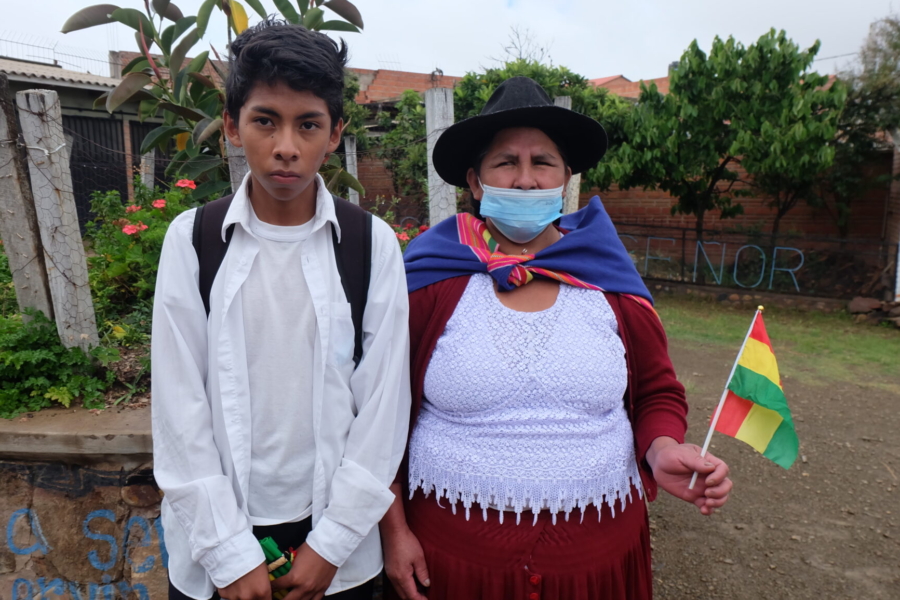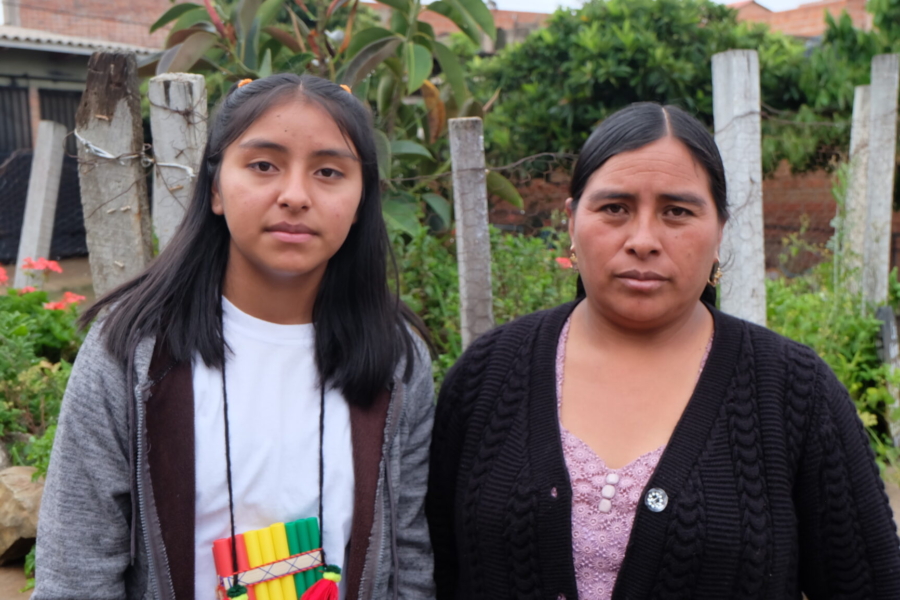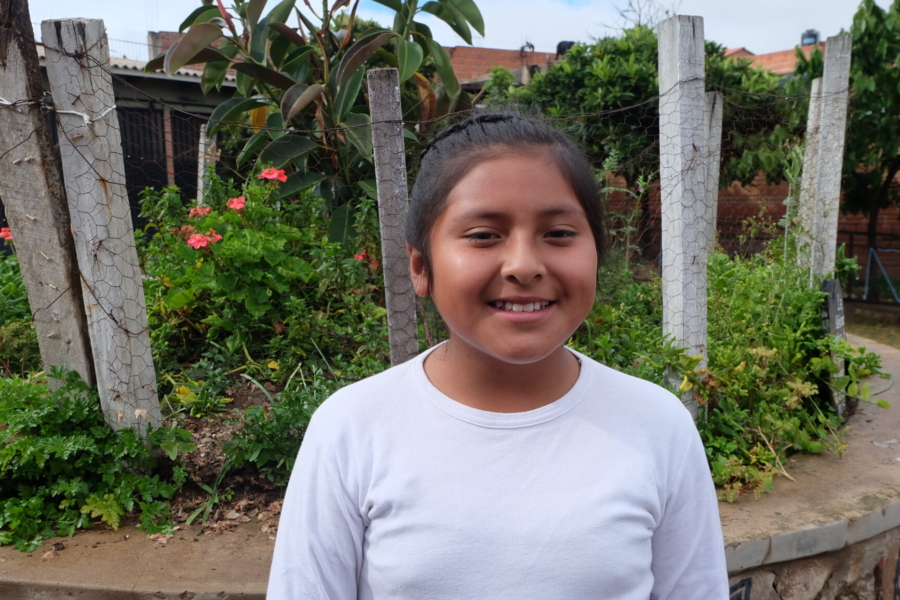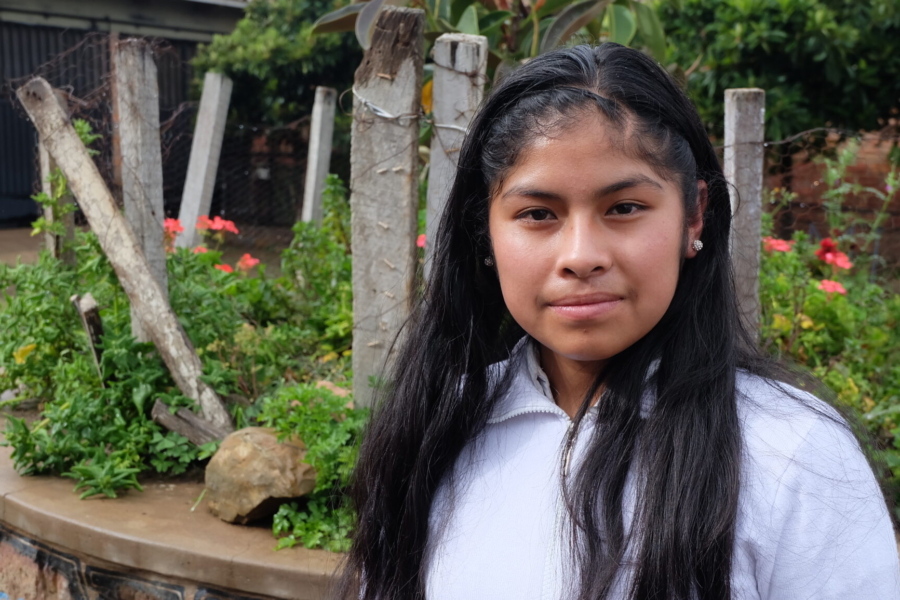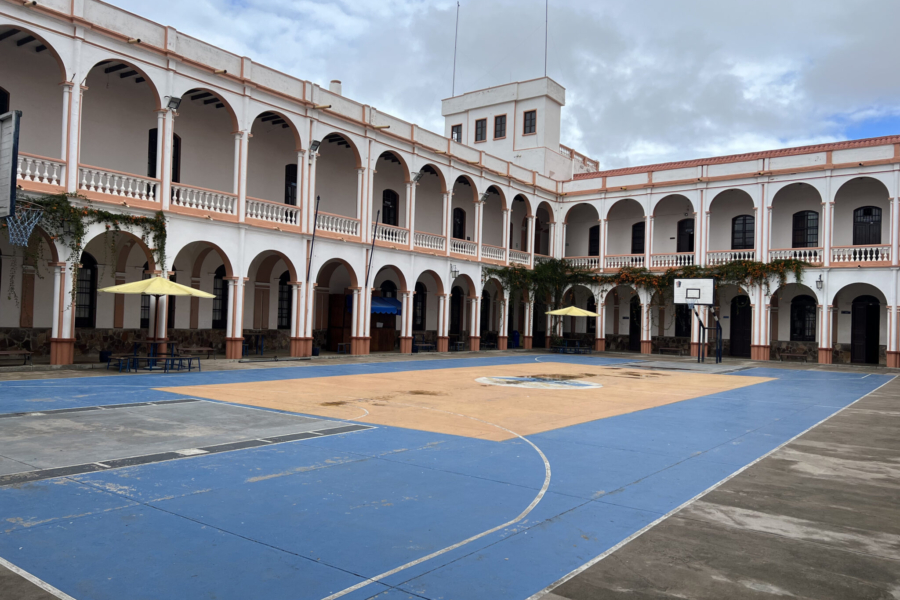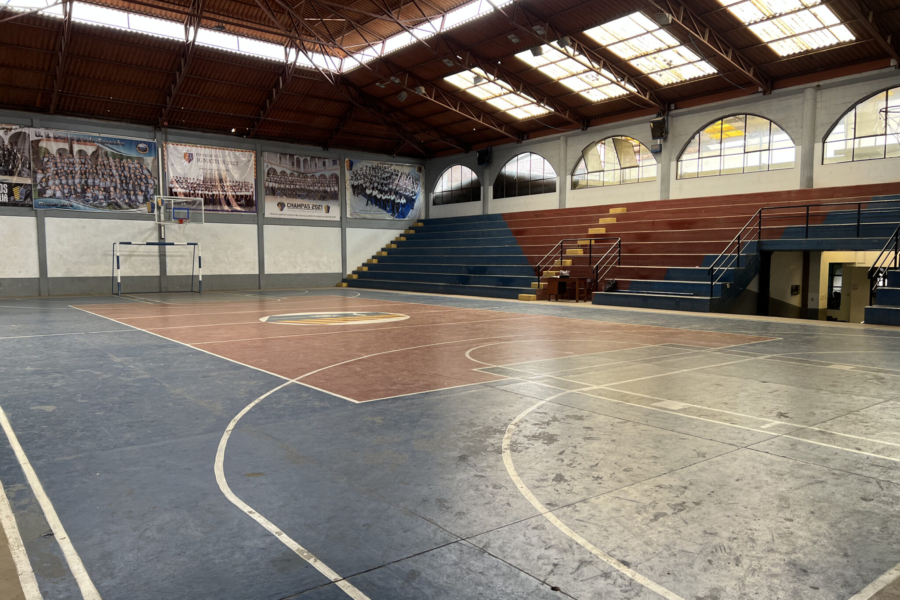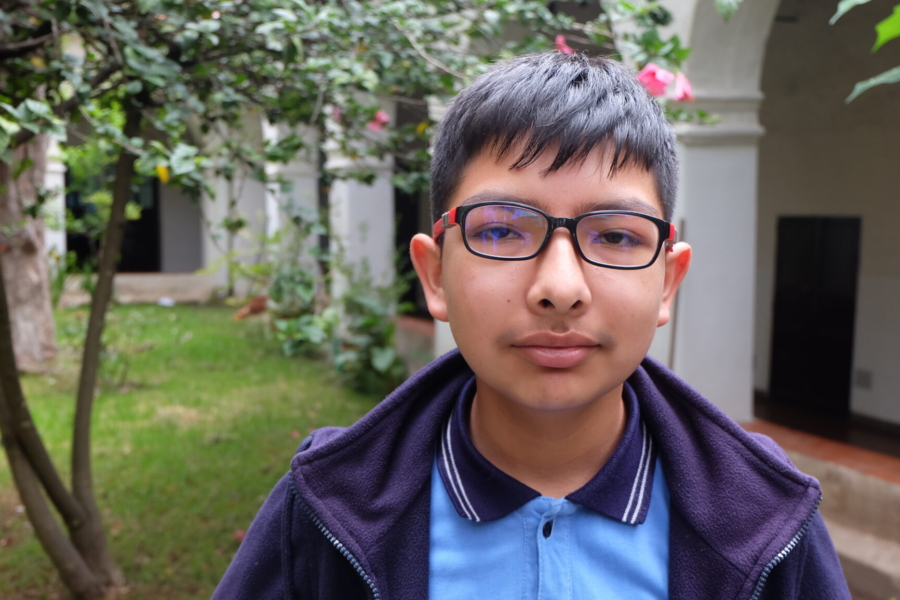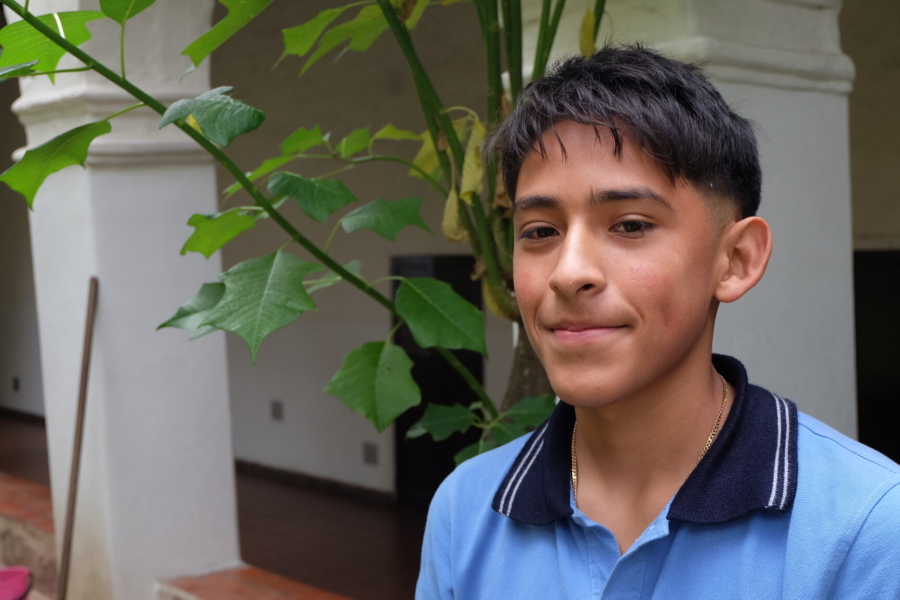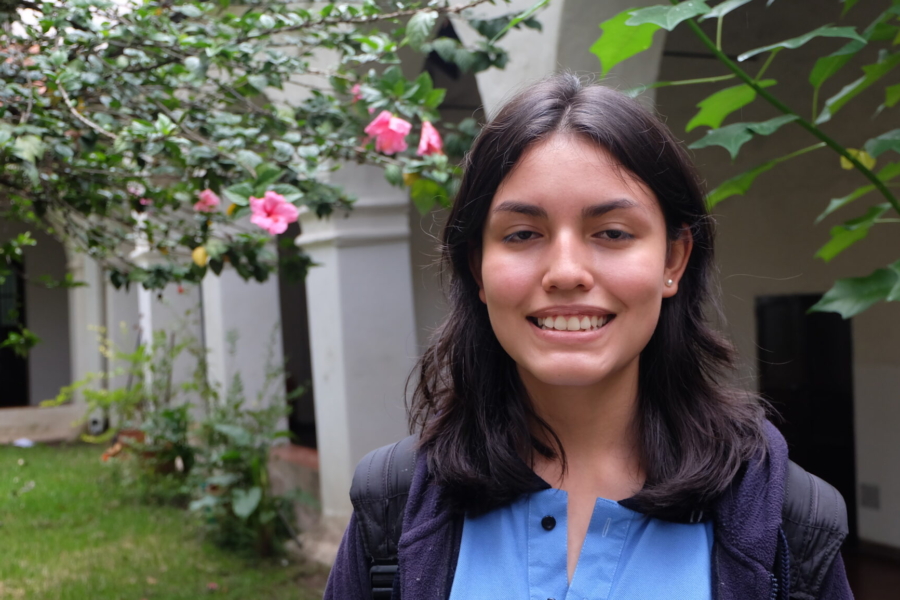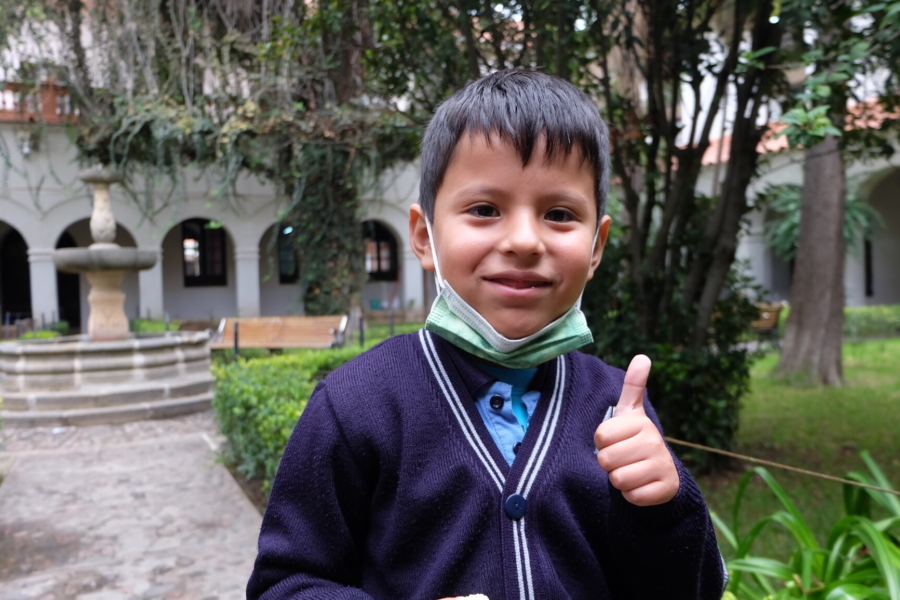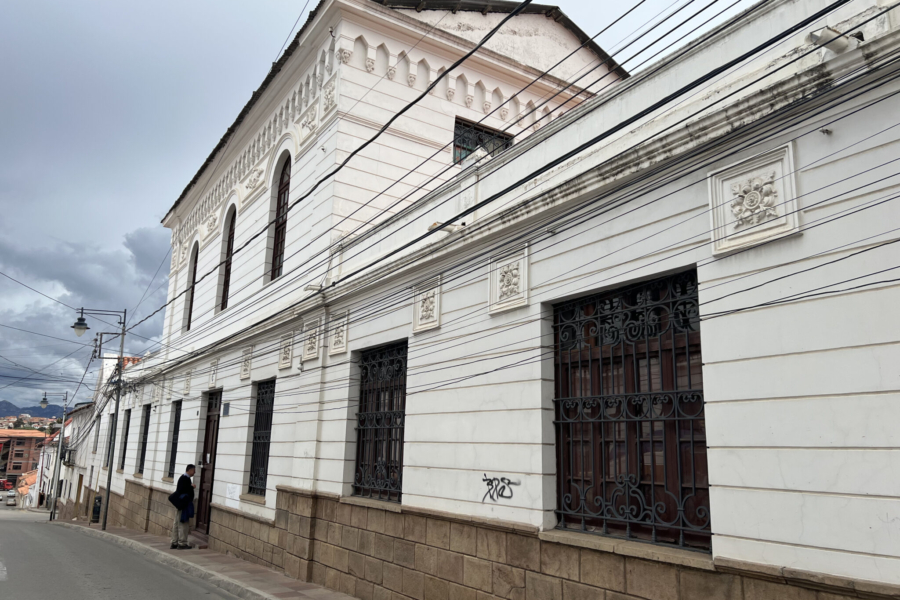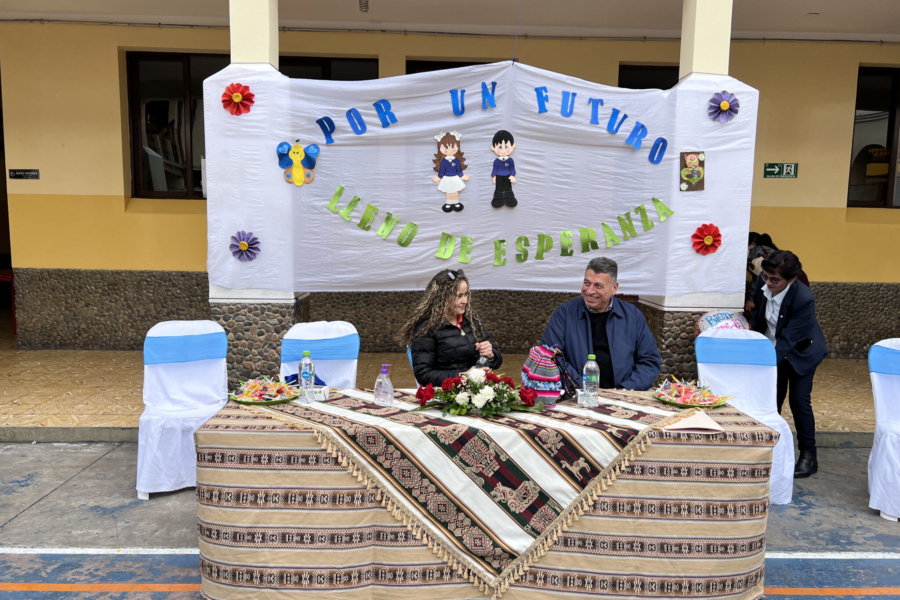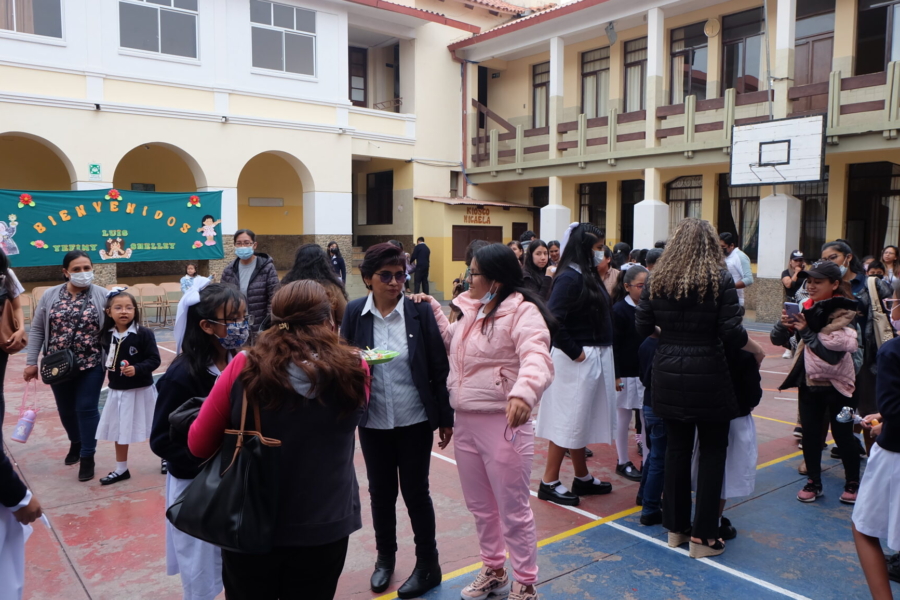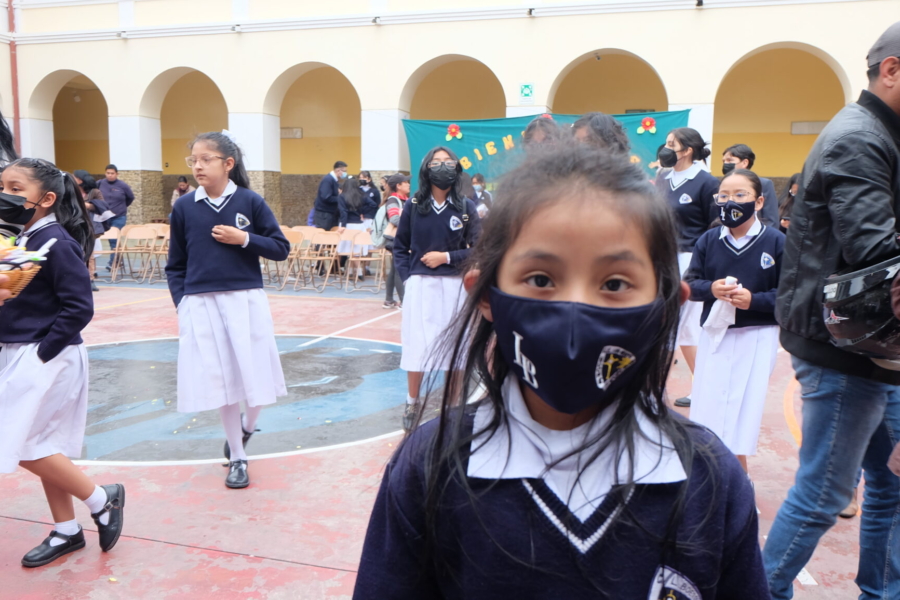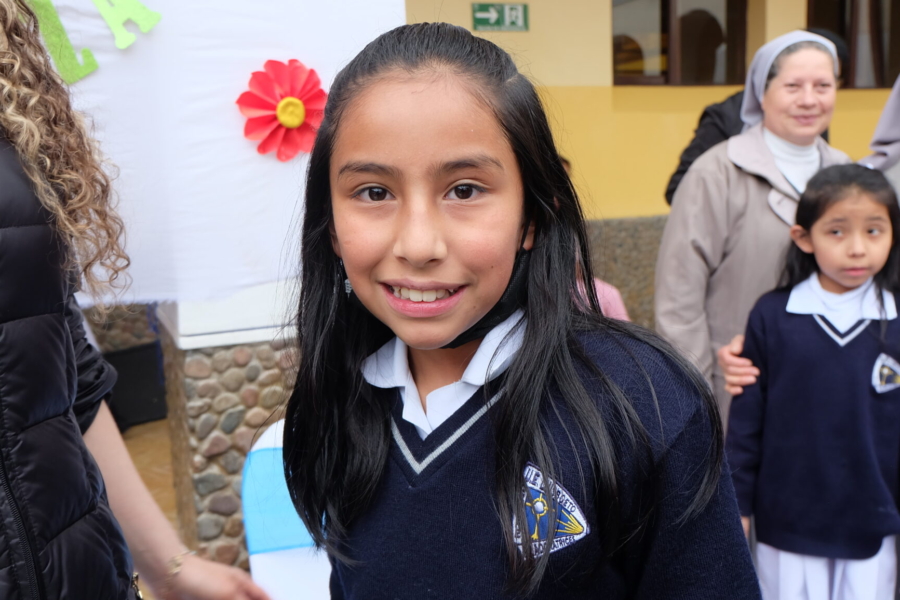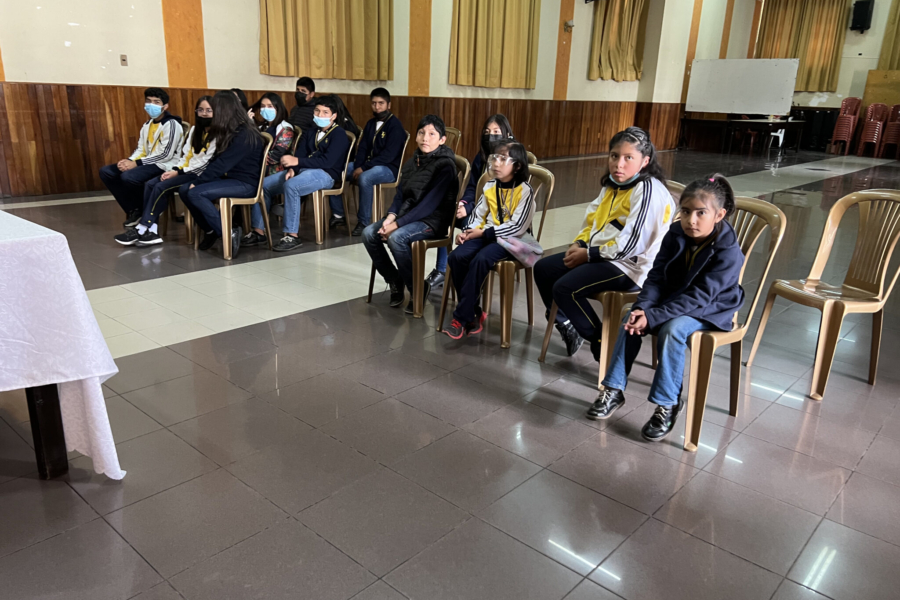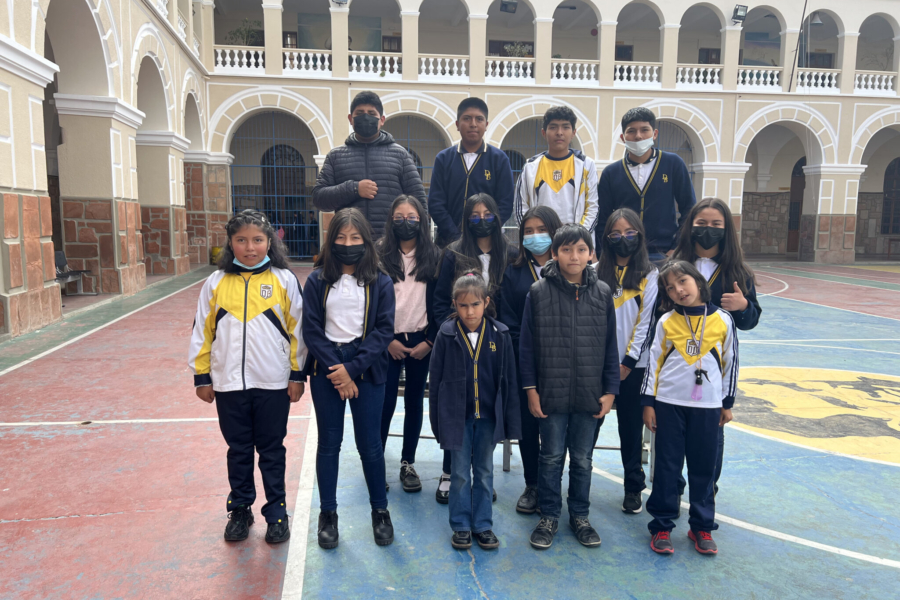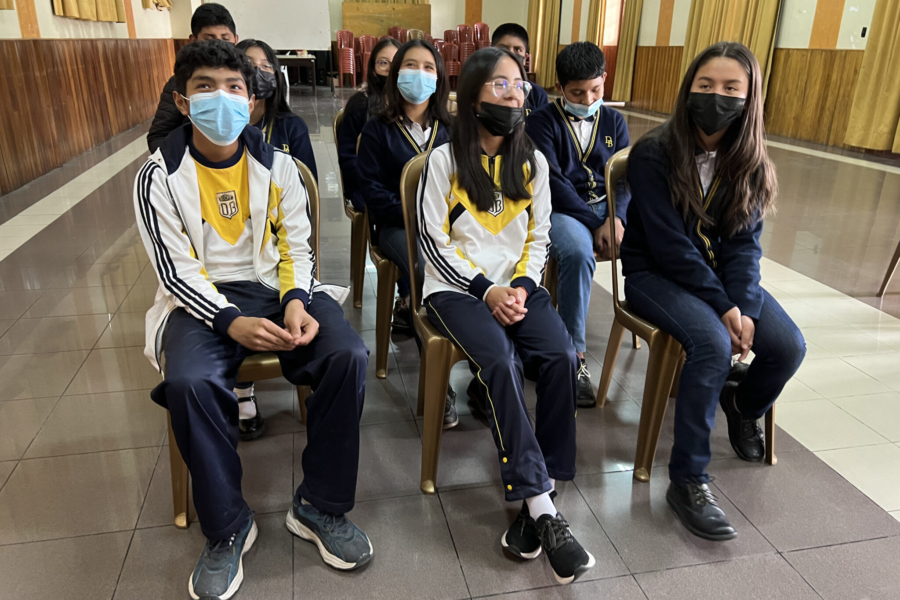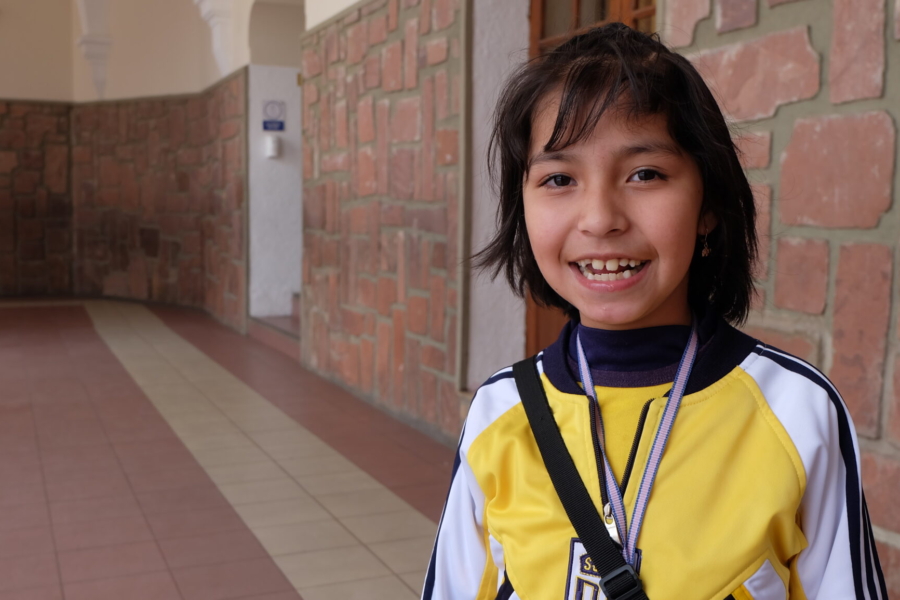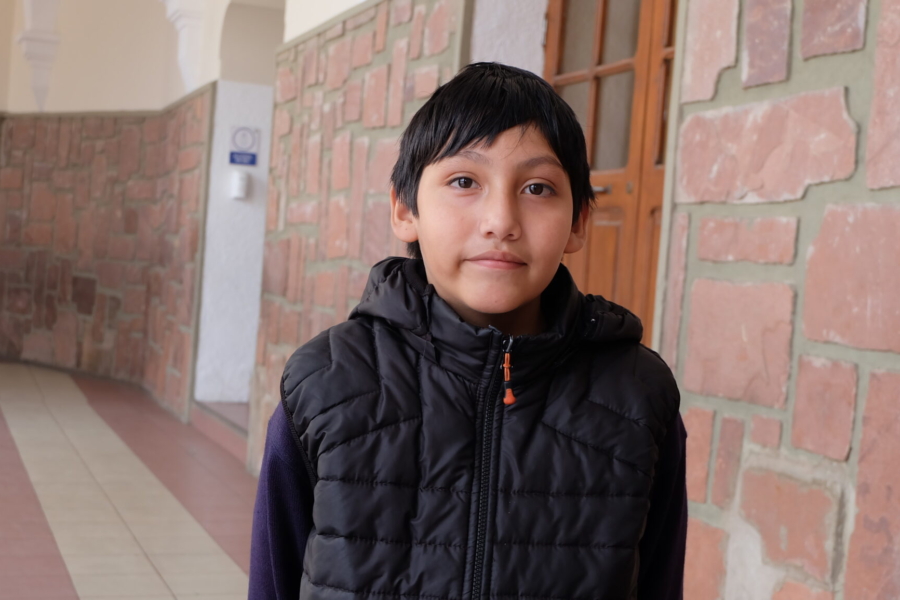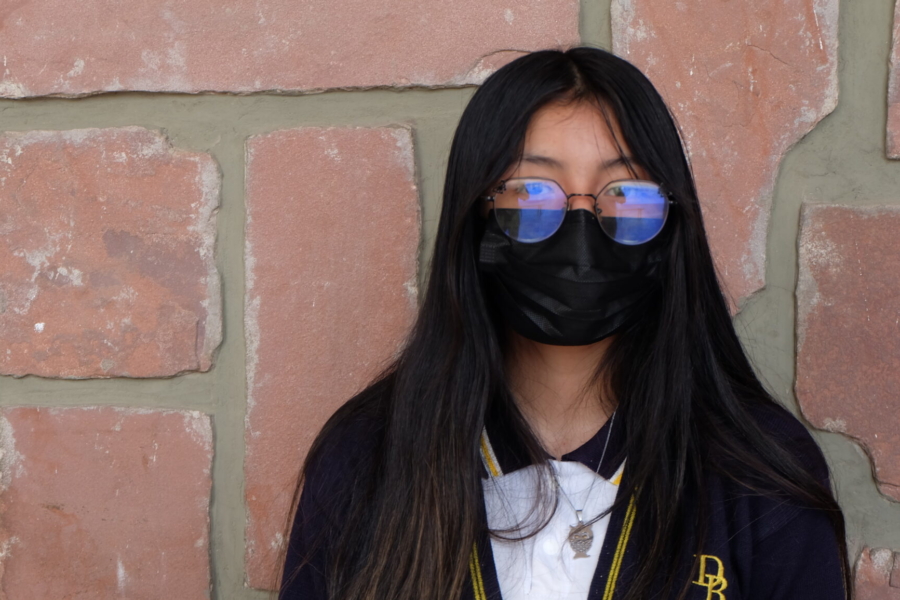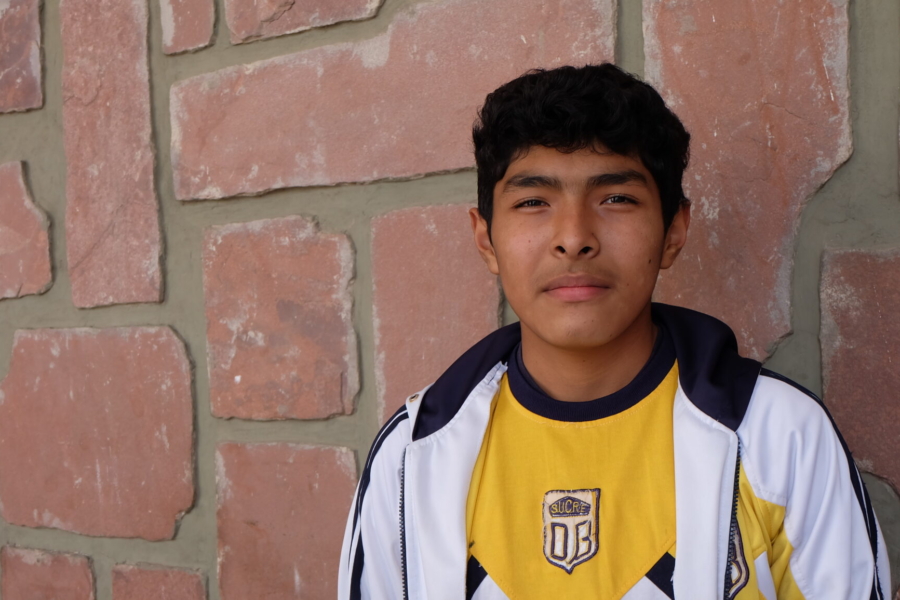Of the eight affiliated sites we work with in Sucre, Bolivia, just two are located outside of the city center. On our first day in Bolivia, our Director of International Programs, Luis Bourdet, and I visited the Santa Rosa School in Yolata, where Children Incorporated is supporting families from the surrounding farming community. On our fifth day in Sucre, we once again ventured away from the city to visit Cristo Rey Mission, our affiliated site located in the community of Alto San Pedro.
Our volunteer coordinator, Lourdes, picked us up to bring us to the center, located about 30 minutes away from Sucre in a slightly mountainous area, where a thick morning fog hung in the air.
When we arrived, we were greeted by not only our sponsored children but their mothers, who all wore traditional clothing of the cholita women of Bolivia. Cholitas are the indigenous women who dress in Andean clothing and adhere to more traditional ways of living in Bolivian culture. In the past, Cholitas were marginalized citizens, considered poor and widely discriminated against. Today, Cholita women have embraced their traditions and consider the traditional dressing as a way to empower themselves and stand strong against the prejudice against them that were prevalent throughout Bolivian history.
Visiting the center
As Luis and I walked through the courtyard, waving hello to the mothers and children, we made our way into the center’s meeting area, where a few of our sponsored children played songs and sang for us. Luis then spoke to the children, thanking them for corresponding with their sponsors and participating in our sponsorship program, which requires them to attend school and do their best to keep their grades up.
Children in our sponsorship program who come to the center attend local schools and receive monthly support thanks to their sponsors.
After Luis’ short presentation, the children and mothers went outside to the entrance of a small kitchen next to the meeting room — a kitchen that feeds 90 children from the neighborhood each and every day thanks to a well-established feeding program run by Cristo Rey Mission. I was impressed to hear that this small center was able help so many students in the community, especially working with limited funding and a small staff.
Additionally, I would come to find out, the center also ran an afterschool program, a boarding program for girls who are attending local universities, and a program to support mothers who are in need of resources. Children in our sponsorship program who come to the center attend local schools and receive monthly support thanks to their sponsors, which is greatly needed.
Helping an entire community
Once the children and their mothers enjoyed a small snack from the kitchen, they all said their goodbyes and headed home, while our volunteer coordinator took us on a walking tour of the neighborhood, which included a few home visits of some of our sponsored children.
It was apparent that this small community, which was inhabited mostly by farm workers, was limited when it came to resources — the homes we visited were nothing more than single rooms with beds on the floors and hotplates used for cooking. One of the mothers we spoke with talked about how hard it was to make a living in this area where jobs were scarce, but how grateful she was for Cristo Rey Mission and all of our sponsors, who help ensure her son wasn’t going without the things he needed to attend school.
***
How do I sponsor a child with Children Incorporated?
You can sponsor a child in one of three ways: call our office at 1-800-538-5381 and speak with one of our staff members; email us at sponsorship@children-inc.org; or go online to our sponsorship portal, create an account, and search for a child that is available for sponsorship.

